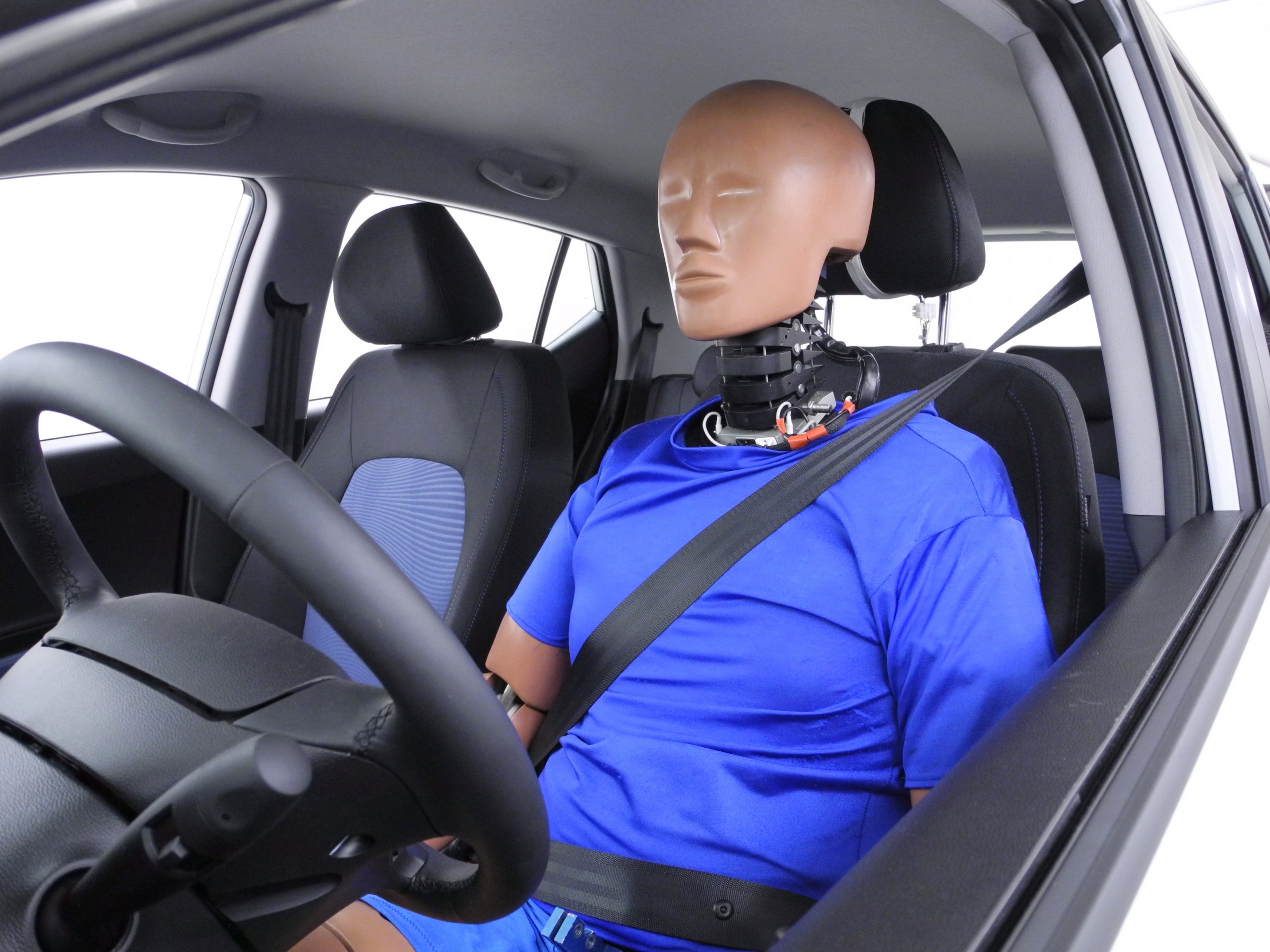Topics at the Allianz Center for Technology:
Protection potential of current vehicle seats

Precisely measured and ready for the rear impact: the BioRid-II Dummy
October 2020
For several decades, experts at the AZT have been investigating the protection potential of vehicle seats in rear-end collisions and researching how this protection potential can be further improved. In 2004 the validation of a dummy with a biofunctional spinal column specially developed for rear-end collisions was completed in cooperation with an international working group. Since 2008 the "BioRid-II" dummy has also been established in consumer protection tests.
The AZT is the only institute in the world that not only uses this dummy in isolation from the vehicle on a seat test component crash facility but also examines the overall system of vehicle and seat with the BioRid-II dummy on the driver's seat.
In almost every crash according to the RCAR standard (structure and bumper rear), but also in vehicle-vehicle collision tests, the vehicle and seat must prove that they would provide good protection for the occupants in accordance with the EURO NCAP consumer protection criteria. In this way, it can be continuously checked whether and to what extent the continuously developed vehicle structural elements have an effect on the occupant load in rear-end collisions.
In 2020 the AZT published an article in the trade journal "VKU - Verkehrsunfall und Fahrzeugtechnik" (VKU - Traffic Accident and Vehicle Technology), which shows that the dummy measurement values of the neck shear and neck shear forces, as well as those of the differential acceleration between the upper body and the head in a rear-end collision, have decreased significantly over the years.
With the adaptation of the Euro NCAP consumer protection criteria in January 2020, the further increase in the protection potential of the seats will be pushed forward so that high acceleration peaks of the vehicle body in a rear-end collision are transmitted to the occupants as flattened as possible and the occupant load is further reduced for the same accident intensity.
The complete article was published in the VKU, issue 5/2020 and is available for registered users (in German language only, part 1 and part 2).